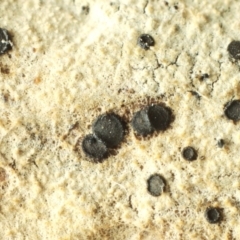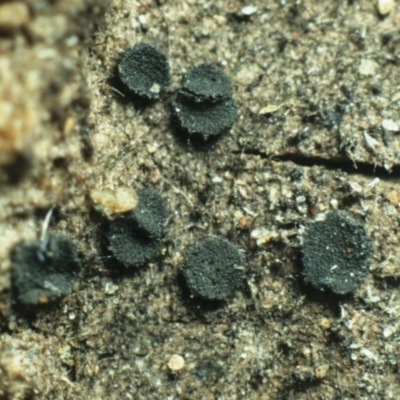Rhizodiscina lignyota
The fruit bodies are small, black disks, between a half and one millimetre in diameter. They appear on dead wood and overseas this fungus has been found on dead wood of a wide variety of plant species.
A small, black, discoid fruit body on wood strongly suggests that a fungus belongs to the family Patellariaceae but confirmation of family and then further identification to genus requires a study of the microscopic detail. An excellent reference for the identification of the genera of Patellariaceae is: S. Yacharoen et al (2015), Patellariaceae revisited, Mycosphere 6(3), 290-326. The authors give a description of the features of the family, a key to the genera within Patellariaceae, a well-illustrated discussion of the features of each genus and detailed notes and illustrations of some 'patellarioid' genera that don't belong in the family.
To get to Rhizodiscina via that key you would have observed these features: the disks develop entirely on the surface of the wood (as opposed to being immersed in or erupting from the wood); the asci have 8 spores; each spore has a single transverse septum; there is no appendage at either end of a spore; the spores are shorter than 15 microns.
Rhizodiscina lignyota is listed in the following regions:
Canberra & Southern Tablelands
Species information
- Rhizodiscina lignyota Scientific name
- Common name
- Not Sensitive
- Local native
- Non-invasive or negligible
- Machine learning








